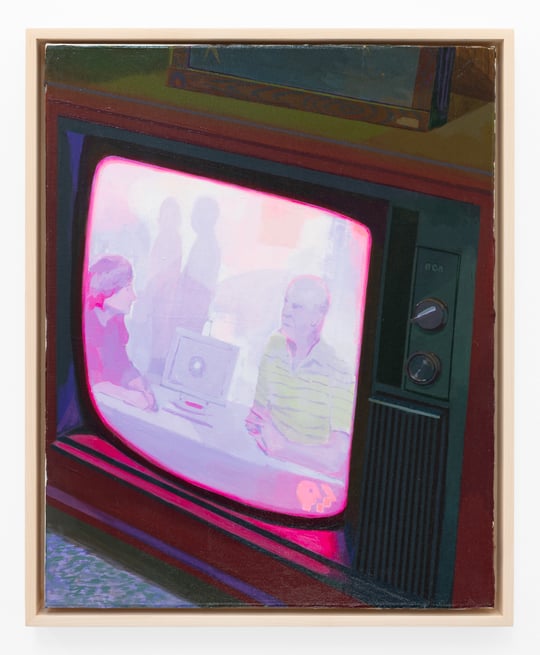
Darrel Ellis: Regeneration, the first major solo exhibition of Darrel Ellis’ work in over twenty-five years held at the Columbia Museum of Art, is a comprehensive reintroduction to an artist who specialized in transcending and reconfiguring modes of creation. To produce his work, Ellis projected photographs onto hand-made sculptures, and then rephotographed the images, often repeatedly, resulting in a single image regenerated into many, much like a family. The exhibit holds over fifty of Ellis’ works.
Ellis was a mixed-media Black artist born and raised in the Bronx, NY. Exploring Black masculinity in the context of family, intimacy, domestic life, sexuality, and grief, Ellis’ work hinged on Black portraiture. Depicting himself and those around him, the artist created a commemorative viewing experience. The unpretentious works show families and interiors reminiscent of the world Ellis’ father occupied for thirty-three years before being murdered by plainclothes police officers months before Ellis’ birth. His father’s photography rings throughout the exhibit, the negatives used as the source material for much of Ellis’ work. His father is depicted in the images only a few times.
Set across a large room halved by a tall white wall are a few dozen independent works and, in the corner of the furthest room, the very camera setup Ellis used to create many of his images. The earliest work in the room is a 1978 portrait of Ellis’ younger sister, Katrina, and the latest, mostly self-portraits, are dated 1991. The artist died from AIDS-related complications in 1992, at age 33. The same age his father was when he was killed.

The traveling exhibit, much like a majority of the works on display, is desaturated in color, invoking a solemn tone through the space. The first room holds most of the works with color in them, sharing images and regenerations of images that are deeply personal, intimate, and reflective. These images demonstrate Ellis’ approach to regenerating images in order to create a new thing, using both images he captured and images he found. Combining drawing, sculpture, and painting, along with other techniques, Ellis’ self-portraits, of which there were eight, are reclamations of portraiture and invite the viewer to perceive Ellis in ways counter to how Ellis saw Black people depicted during the 70s and 80s. In Self Portrait after Photograph by Peter Hujar, Ellis draws and paints himself black, gray, and white, reimagining the sensual original photograph by Peter Hujar, who died two years earlier from AIDS-related complications. The frame is tight and textured, Ellis recreates the image to see himself larger and more closely, though not necessarily more clearly. What is not a self-portrait in the first room are instead images of spatial intimacy, several depicting familial exchanges in domestic places. In a series of works titled Untitled (Mother’s Bedroom), the most casual, at ease expressions and interactions are captured and revealed in trapezoidal shapes and often hand-painted to reclaim texture.

As the viewer moves into the second room of the exhibit, the colors grow more subdued and Ellis himself makes no appearances, highlighting his family and others in his stead. Aunts, uncles, and Ellis’ parents and sister are all captured and reimagined. Faces are obscured with shapes like in Untitled (Laure on Easter Sunday) or the shape of the original image is manipulated to create a distorted rendition of the memory like in Untitled (Aunt Connie and Uncle Richard). While the affectionate embrace of Ellis’ aunt and uncle can still be gleaned from the image, the memory it captures very visibly feels like a mirage; a misshapen view into a world long gone that’s twisting and turning in time.
As the viewer spends time in the space, Ellis’ intention to make one feel “that we all made the picture” settles in every image. With interiors and subjects that feel like home, like family, the viewer is invited to see Ellis as an artist who was also once a friend, a lover, a son, a brother. The audience is invited to see how he refused to waste the opportunity to see himself with agency and others with love. Ellis’ work invites viewers to do the same.





